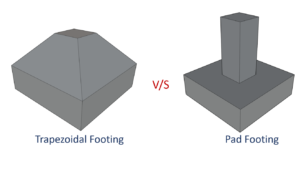
WHAT IS BOND? WHAT ARE THE DIFFERENT TYPES BONDS USED IN BRICK MASONRY?
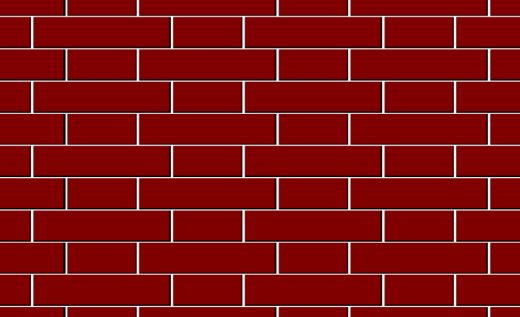
What is Bond?
A bond is formed when cement mortar fills a groove formed by adjacent bricks being laid side by side. Bonding helps distribute loads evenly over a large area. These bonds are like patterns in which bricks are laid, which can be used for brick walls and paving. They can also be used for concrete blocks and masonry construction.
Purpose of Bonds:
- The main goal is to create a bond between the vertical joints in the serial courses of a masonry framework, which will act as a bounded mass and transfer its weight uniformly to the foundations by breaking the flow of the joints in both lengths and thickness.
- In addition, it can ensure the structure’s strength in all directions.
- Bricks can also be laid in a regular pattern to create a more welcoming appearance.
- More masons can be enlisted to work on the same project simultaneously to speed things up.
Rules for Good Bonding:
- The size of each brick should be the same. So that the bricks fit together evenly, their length should be twice their width plus one joint. You can’t make a good bond if the lap is different.
- The overlap should be 1/4 of brick along the wall’s length and 1/2 across the width.
- Don’t use brick bats unless you have to or are told to in certain places.
- On alternate courses, the center line of the header should match the center line of the stretcher on the course below or above it.
- The vertical joints in each course should be on the same vertical axis.
- It is better to have a header course on both sides of the wall every sixth.
- Avoid using raked joints and other joints that create horizontal water tables. Joints should be concave and worn down.
Different Types of Bonds used in Brick Masonry:
1. Stretcher Bond:
A stretcher bond, also known as a running bond, is formed if the bricks are laid so that only the stretchers are visible. In the brickwork, the simplest repeating pattern is the stretcher bond. Stretcher bond, on the other hand, has the drawback of being unable to effectively bond adjacent bricks in full-width thick brick walls. Only one-half brick thick walls, such as a half-brick thick partition wall, are suitable for their use.
In greater span and height cases, stretcher bond-built walls aren’t stable enough to stand independently. As a result, they require periodic support in the form of brick masonry columns. Regarding the outer facing of steel or reinforced concrete framed structures, stretcher bonds are frequently used. Cavity walls can also be covered in this. Boundary walls, gardens, and other outdoor spaces benefit from using these types of walls.
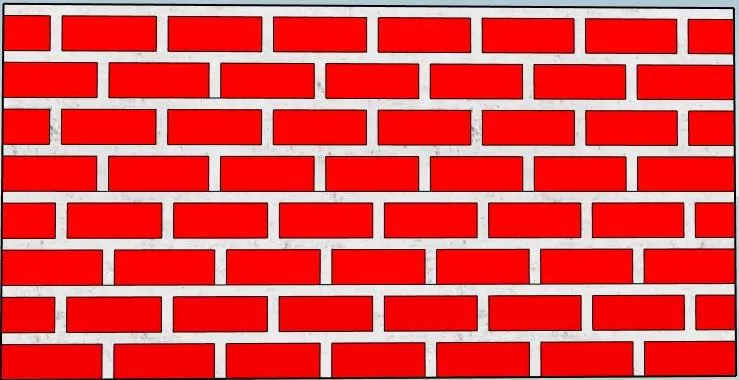
2. English bond:
The English bond is a pattern created by alternately laying stretchers and headers in brick masonry work. On the stretchers below, the headers are laid out in alternate rows, vertically aligned. The queen closer is used after the first header in each heading course to break the continuity of vertical joints at the beginning and end of a wall. Useful at corners in walls made of brick, queen closers are a type of half-brick.
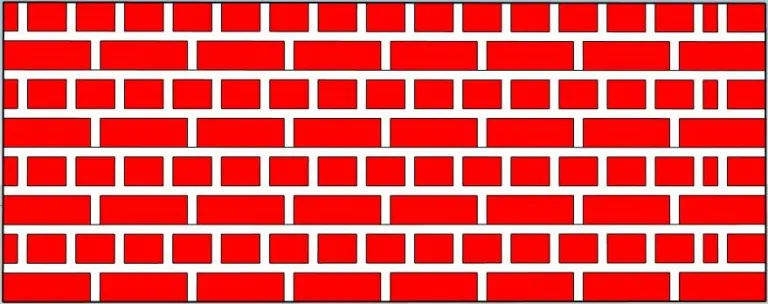
3. Header Bond:
It is a 9cm x 9cm square face of the brick that serves as the “header” All of the bricks in a wall are used as headers in these bonds. Header bonds can also be referred to as heading bonds. Walls with a half-brick thickness are constructed using the Stretcher Bond, and white walls with a full brick thickness are constructed using this bond. The overlap in these bonds is kept to half the brick’s width. Alternate courses of three-quarter brickbats are used as quoins.
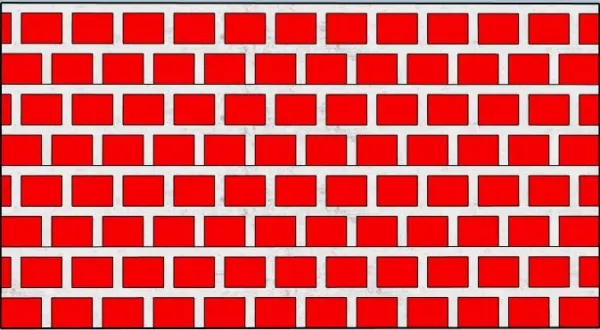
4. Flemish Bond:
The Flemish Bond, also known as the Dutch bond, is made by alternating headers and stretchers in a single course. The next course of bricks laid the header in the center of the stretcher in the course below, i.e., alternate headers centered the stretcher below. The bond begins with a header in the corner on each of the alternate routes.

The construction of this bond is extremely difficult and requires a high degree of skill, as all vertical mortar joints need to be aligned vertically for the best and most impressive results. Closers install alternate courses next to the quoin header to break vertical joints during subsequent courses. Bats are used for walls with an odd number of half bricks in thickness.
Even though Flemish bonds have a more attractive appearance, they are weaker than English bonds when it comes to supporting the weight of a wall. For brick walls, the Flemish bond can be used, but for plastered walls, the English bond is more appropriate.
There are two types of Flemish bonds:
i) Single Flemish Bond:
A single Flemish bond is a mix of the two Flemish and English bonds. During construction, a Flemish bond is used in front of the wall and an English bond on the back. Single Flemish bonds require at least one and a half bricks of thickness. For the most part, using a single Flemish bond is aimed at enhancing the appearance of the wall’s front side while maintaining the brickwork’s structural integrity.
ii) Double Flemish Bond:
The Double Flemish Bond has a similar appearance from both sides of the face in the front and back elevations, i.e., it is made up of alternating stretcher and header in each course. This type of bonding is less strong than the English bond.
5. Garden Wall Bond:
As a garden or boundary wall, this type of bond is ideal for one-brick thick walls. With a garden wall bond, a wall can be built quickly and cheaply, and each side will look the same. Dwarf walls and other structures that aren’t subjected to much stress can use this type of bond, which isn’t quite as strong as the English bond. The outer leaves of cavity walls may be constructed with this bond due to its attractive appearance.
Garden wall bonds are classified as:
i) Flemish Garden Wall Bond:

Stretcher, header, and Stretcher models are used in the Flemish bond. It’s also known as “Sussex Bond.” Instead of having one stretcher and one header, this type of bond has three stretchers and one header in the same course. It is sometimes called “balanced bonding.” That’s clear from the picture. There are two Flemish bonds in the Flemish garden wall bond: one has three stretchers for every header, and the other has two stretchers for every header.
ii) English Garden Wall Bond:

Bricks in this type of bonding are arranged similarly to those in English bonds, except that the heading courses are only inserted every four or six courses. Three courses of stretchers typically accompany one course of headers. On the heading course, the necessary lap is provided by a queen closer placed next to the quoin header.
6. Scottish Bond & American Bond:
Stretchers are used five times under the header course in the Scottish Bond. There are seven brick masonry repetitions in the course in American Bond.
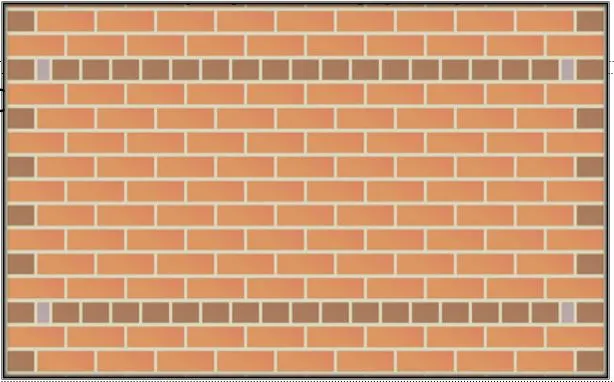

7. Stack Bond:

In bond construction, bricks are placed one on top of the other, joints running vertically down the length of the wall. Bricks can also be stacked vertically or horizontally. This bond is weak and frequently structurally unsound because of the minimal bonding caused by the joint alignment unless wire bed-joint reinforcement is installed in every horizontal course or, in cases where loading is moderate, in every alternate course. It is frequently applied as a rain screen and solely for decorative purposes.
8. Facing bond:
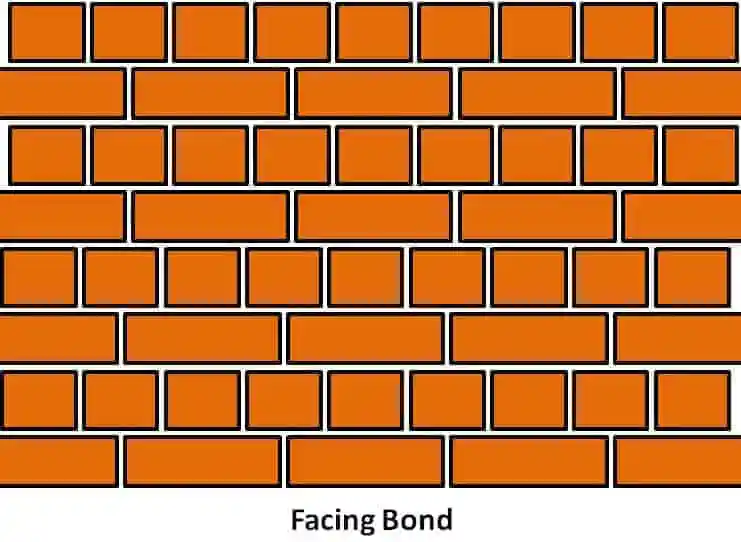
A facing bond is a brick bond in which the bricks are laid so that a header course comes only after several courses of stretcher course. It is most commonly used to build thick walls. Bonding the two different thicknesses of the facing wall and the backing wall can be extremely beneficial.
However, the number of joints in the facing and backing face is not equal due to the uneven load distribution caused by the wide range of thicknesses. The uneven settlement of the masonry walls may also result from this non-uniformity.
9. Raking Bond:
It is a brick bond in which the bonding bricks are laid at an angle other than zero or ninety degrees. English bond walls built this way are more stable in the long run because of this arrangement. In this method of bonding the two halves, a wall’s external stretchers are filled with bricks tilted toward the wall’s face. A wall’s height is divided into sections where this bond is inserted.
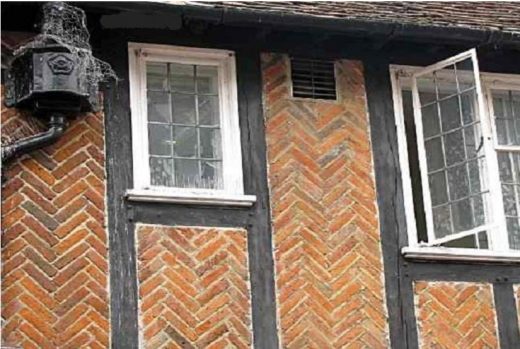
There are two types of racking bonds:
i) Herring-bone Bond:
This type of bond is best suited for walls with a minimum thickness of four bricks or greater. Bricks are arranged at a 45-degree angle from the center in two directions in this arrangement of brickwork. Bonds of this type can also be found on brick pavements.
ii) Diagonal Bond:
A wall with a thickness of two to four bricks is best suited for this bond. In most walls, this bond is introduced every fifth or seventh course or so of the height. The bricks are arranged so that corners of the series remain in contact with the stretchers in this bond.

10. Zig Zag Brick Bond:
A zigzag bond is a bond in which the bricks are laid in a zigzag pattern throughout the joint. The Herring-bone and zigzag bonds are examples of the same type of bond. It is used for paving works in residential constructions, such as floors, and footpaths, because of its attractive appearance. Despite this, the zigzag bond cannot be used to build masonry structures’ main walls because it is not loading bearing.

Conclusion:
Each brick masonry bond has its own application and characteristics, from providing stability for adding visual interest, texture, and strength. Builder, Engineers and Architecture can select the suitable type of brick masonry bond based on the specific requirement of the construction project.
Mainly focus on the structure details of this brick masonry bond is essential for achieving successful and durable masonry structure.




